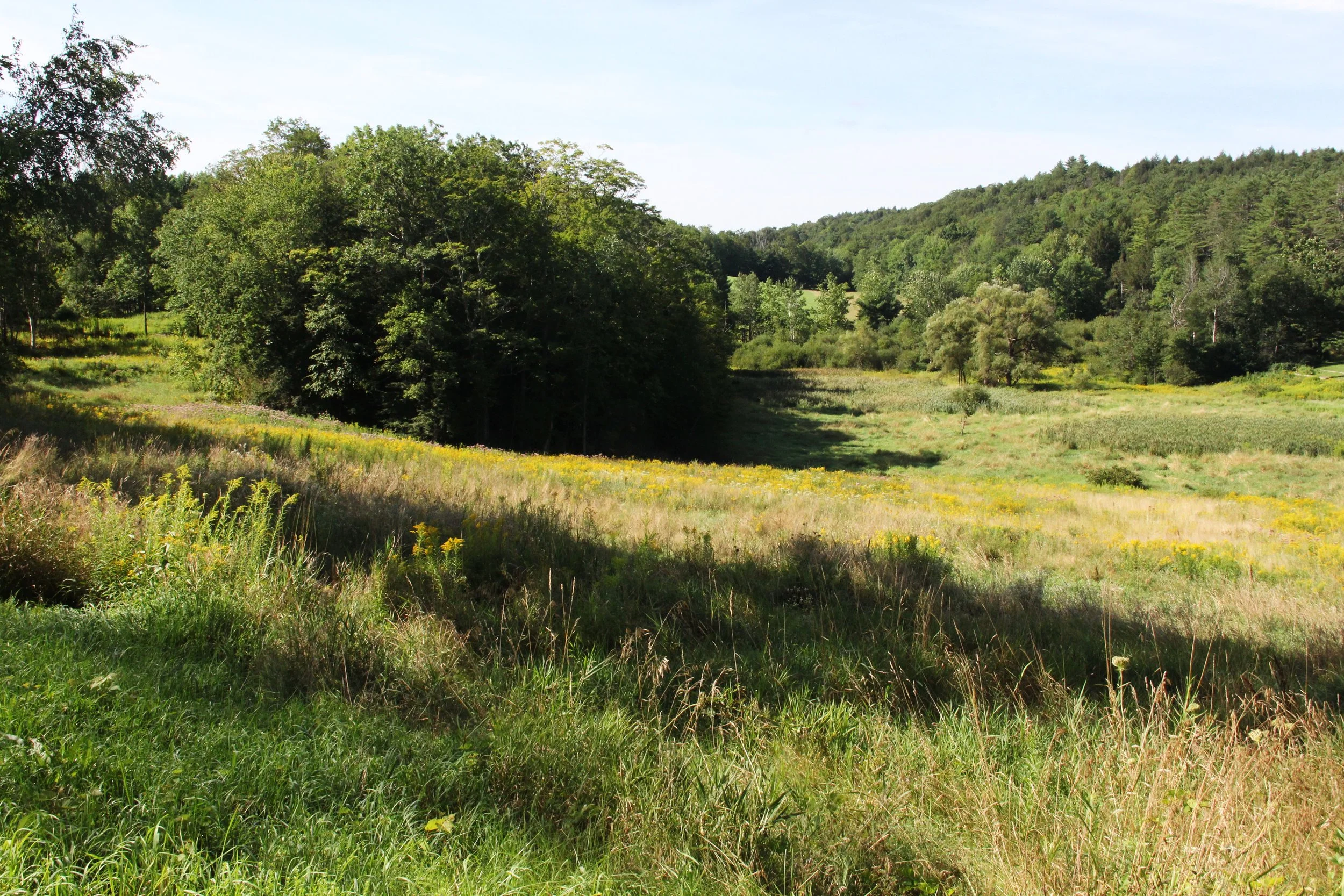Working with The Vermont Land Trust and the Windham County Conservation District, Mary and I are working to restore our five acre meadow to a native habitat for bird and wildlife. This post outlines the specific steps we have recently taken in that effort.
Read MoreIt appears to Mary and me that climate change is beginning to impact our garden in new ways.
Read MoreIn this 1 hour illustrated talk at The Latchis Theatre in Brattleboro, Vermont, I share my ideas about how to design a garden room.
Read MoreI woke just before 6:00 AM on the morning of March 10. Looking out the window, I could make out through a thick haze 6” of fluffy snow had fallen overnight. Snow had gathered atop every single branch and twig on every woody plant in our 1 ½ acre garden.
Read MoreI’m going to shift for this coming winter from posts about our garden to pay attention to a five acre meadow we own, a meadow we are in the process of “restoring”,“rewilding”, “conserving”.
Read MoreWe gardeners can all look back to those adults in our childhood who inspired us to garden: an uncle, a mother, grandmother or aunt, a neighbor. We can all look back to models who had ways of relating to the natural world that remain in us today. And memories of them, sometimes startling, clear memories stretching over decades, attest to the lasting power of people from our pasts who remain very much alive through and in our gardens today.
Read MoreIt wasn’t until one day in mid-April of 1984 that we learned all those eight or ten barn swallow nests clinging to rafters of our 150 year old barn would in fact be occupied. Because we had moved in to our sadly neglected 200 year old farmhouse the previous December, we had no way of knowing if those nests were simply artifacts from the past, or nests waiting for the return of their builders.
Read More“Ornament” is an inadequate word to describe a metal gate we installed in our garden last year. And it is extraordinary because of the rich associations the gate has with the life that my wife Mary and I have shared since 1976.
Read MoreOld houses have stories to tell, and our 1790 Vermont farmhouse and 1840 garden shed are no exception. But sometimes it takes years before you’re able to read those stories.
Read MoreIt’s March 2. I’ve just come in to my office, camera in hand, from photographing a variety of willows out there in our snow-covered garden. Later today I’ll go back into the garden with a ladder and Felco #2 pruning shears in hand to prune back last year’s growth on those willows I’ve been pollarding now for several years.
Read MoreGarden ornaments, sculptures, pots, all the objects we place in our gardens, can carry into your present garden all kinds of deeply personal meanings, feelings and associations with people, places or past experiences.
Read MoreWelcome to our totally new website in which we celebrate 35 years of working side by side to create our garden.
Read MoreIn 1984, when we started cleaning up what had become a pretty neglected place, we found all sorts of things that helped us associate our new garden with this old farm.
Read MoreI want to thank The Garden Club of America for the honor they gave me in May, 2019 at their national convention in Boston. Each year the 201 GCA clubs (and their 18,000 members) from across the country are invited to nominate individuals who have contributed in a significant way to American gardening.
Read MoreIn 2017 our garden was registered with the Smithsonian Archives of American Gardens, an archive that is a collaboration between The Smithsonian and The Garden Club of America.
Read More





